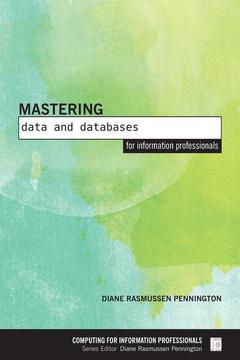Description
Mastering Data and Databases for Information Professionals
Computing for Information Professionals Series
Author: Pennington Diane Rasmussen
Language: English
Approximative price 64.94 €
In Print (Delivery period: 14 days).
Add to cartPublication date: 10-2023
· 15.6x23.4 cm · Paperback
Approximative price 130.45 €
In Print (Delivery period: 14 days).
Add to cartPublication date: 04-2020
· 15.6x23.4 cm · Hardback
Description
/li>Contents
/li>
This textbook, the first in the Computing for Information Professionals series provides a hands-on and appropriately technical introduction to data and databases for information professionals and students of library and information science (LIS). The book is structured in three parts, Part I: Introduction to Databases and Data provides a holistic look at where data exists in the library setting and examines how to determine and communicate database needs prior to implementation. Part II: Structured Data and Databases provides guidance on creating, implementing and working with relational databases and Part III: The New Generation of Data and Databases investigates the rapidly growing topics of interest in today's libraries including linked data, unstructured data and big data. The key chapters include: the data in your library, understanding your data, communicating your data, structured data and relational databases, creating relational databases, maintaining relational databases, interfacing with relational databases, semi-structured data, unstructured and "big" data, linked data, and the future of data and databases. This book will be useful for librarians and information professionals, as well as professionals working in museums, archives, records management, or within any other organisation that has data to manage. It will also be a key textbook for LIS students.
PART I. INTRODUCTION TO DATABASES AND DATA 1. Introduction 2. The data in your library 3. Understanding your data 4. Communicating your data PART II. STRUCTURED DATA AND DATABASES 5. Structured data and relational databases 6. Creating relational databases 7. Maintaining relational databases 8. Interfacing with relational databases PART III. THE NEW GENERATION OF DATA AND DATABASES 9. Semi-structured data 10. Unstructured and "big" data 11. Linked data 12. The future of data and databases




